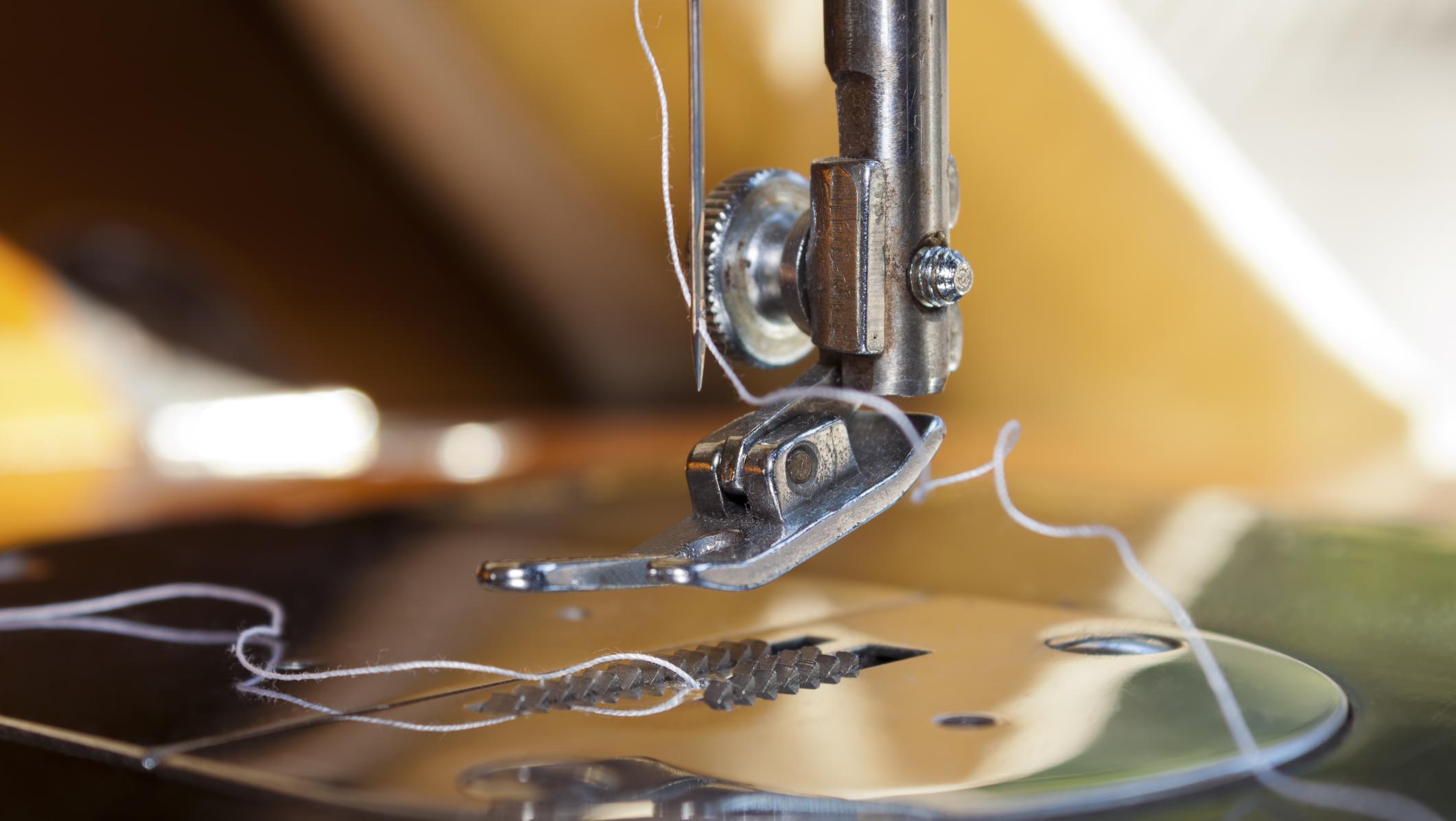I Worked in the Bridal Industry and Couldn’t Believe the Size Discrimination I Witnessed There
I loved working at a bridal salon in Beverly Hills. I remember, on my first day, reverentially running my fingers over the skirt of an Elie Saab and gasping at a one-of-a-kind Valentino gown.
As a fashion enthusiast, it was my personal paradise. I loved trying on couture dresses that I would never otherwise touch or even see.
I was immediately seduced by this new world, so much so that it took hindsight to realize what a crazy place it was. Not until recently did I reflect on how wealth, fame, and physical beauty were used as a currency, with one’s value rising with the combination of the three.
The salon was definitely skewed toward that trifecta, as reflective of its geographical position in Beverly Hills. It typically wasn’t bothersome—the salon was there to make money and that was the best way to do it.

A
lot of the brides were traditionally beautiful and thin. I was obsessed
with this bride’s style and loved working with her. Isn’t that short
hair PERFECT?
To be fair, my salon wasn’t specifically to blame—it was merely reflective of the bridal industry’s attitude toward full-figured women. It basically equated this. Skinny=yay!/Not Skinny=there isn’t much here for you. Through my time there, I noticed, over and over again, the ways the bridal industry fails brides who are larger than a size 16.
Sample Sizes
Designer bridal salons carry one sample of each gown and it is clipped to each specific bride’s dimensions. I was an expert at wielding our industrial-strength woodworking clamps around the zippers of the gowns, molding them to my customer’s body.
The sample sizes were 8-12. But keep in mind. That’s 8-12 in bridal sizes which then translates to streetwear sizes of 6-10. That means plus-sized women couldn’t try on gowns the same way, if at all. I remember once telling a woman,
“So we will need to open up this bust cup through a special order. These seams on the side will come over about three inches.”
I went on, trying to explain to this woman how the B-cup, size 10 bridal gown would look in her proportions. I did my best, trying to help her visualize something that did not yet exist.
Our salon featured about 300 gowns and, out of all of them, there were about 12 in a size 16 or larger. Trunk shows (where a designer sends a curated selection of their upcoming gowns or bestsellers) were even worse. Once, as I unpacked gown after gown for a show, I noticed that most of the sizes were 2-6.
Some of them were even runway samples, which basically means they were tailored for a professional model (i.e.,: a marvel of nature who is 5’9 and has a 24 or 25 inch waist).
Sometimes brides ordered a gown without trying it on because they loved the way it looked even though they couldn’t put it on. It’s a crazy thing to expect of any bride. Those appointments stand out in my mind. We would sit down together and slowly work through what would suit her figure, personality and style.
Other times, I would hold the dresses up in front of the brides, trying to approximate a sense of how it would look, the same way you would hold up a paper dress on a paper doll. I hated it when the bride’s mother or friend would obsess with finding a flattering gown, often at the cost of the bride’s personal taste. I felt like I failed when a bride settled on a gown solely because she looked skinny in it.
Wrong Perspective on Styling
Consultants tried to skip appointments with heavier brides, simply because there wasn’t much to show them. However, I always admired these women who came to our salon, determined to find a gown despite the challenges. I appreciated them because they were intelligent, vibrant women who were grounded in themselves and their relationships. I have to say it—usually they were nicer than the other brides. And they had great taste.
I actually preferred these appointments. I loved the brides and I learned so much about fashion and body types. For example, most salons will automatically grab the nearest ball gown or A-line for these brides in an attempt to cover them up in tent-like gowns. That, in my opinion, is the completely wrong way to approach plus size brides.
Proportion should determine silhouette, not size. I had a gorgeous green-eyed bride with the blackest hair I had ever seen. She was a size 20 and her figure was beautifully balanced. When she tried on a mermaid gown (which was only possible because the seam was split all the way down the back from a previous customer), and turned to the mirror, she gasped.
“I didn’t know I could wear this!” she said. The gown had ruched organza through the torso and hips and exploded into a profusion of ruffles at the bottom. I slipped a silk flower into her long, wavy hair and she looked like a vintage princess from Spain. I was as awed as she was. And I can promise you this—every eye on that salon was on her, not the other cookie-cutter thin brides around her.
If a bride wasn’t proportional (and super skinny brides were just as often disproportional as others), I marveled at the ways fashion compensated. With the appropriate use of structured bodices, crinoline, and tailoring, any woman could look absolutely exquisite. And that’s the strange thing about fashion. It can be exclusive and inaccessible for many yet, when used correctly, it redefines the figure, playing up strengths and downplaying perceived weaknesses.
Limited Size Charts and Extra Fees
While I loved styling these brides and celebrating with them when they found the one, I dreaded ringing them up. From that point on, I couldn’t hide the fact that the bridal industry is downright cruel to anyone who is a size 18 or up.
First of all, any bride who fell in a size 18 or up would be slapped with a surcharge. This could add anywhere from 10% to 15% to the bride’s order. 15% of a $7500 gown is a whopping $1,125! In what universe is that OK? Yes, it does take extra fabric to make larger sizes, but $1,125 can buy you a plane ticket to Europe.
Other times, certain size charts didn’t extend past a size 20. I remember explaining to a bride that the gown she loved wasn’t cut in her size.
“You can lose the weight,” her friend immediately interjected. “Just do whatever it takes. This is important.”
I also had a bride who absolutely loved a certain gown but it wasn’t stocked in her size. She ordered two of the same gown. Two.
“Do you feel OK doing this?” I asked her. She nodded and said,
“I know what I want but I can’t find it my size. This is the only way.”
Our seamstress pieced it together into one. It turned out beautifully but it was ridiculous that she had to resort to this, spending double.
Oftentimes, if we called the designer, they would recut a pattern for a bride but it came at an even larger cost. I wondered why the size charts were so limited, especially when they already ran small. Did the designers have a certain image for their gowns? Did they only want skinny girls wearing them? These questions plagued me and once, when a designer came in for a trunk show, I asked him.
“Its fashion, darling.” he replied flippantly. “Just fashion.”
Alterations
The attitude pervading alterations was “She will lose weight.” This was applied to every single bride, no matter her size.
It wasn’t the seamstresses’ faults—in fact, they were loving women who prided themselves on their craft. After seeing brides lose weight time and time again, they delayed alterations so they wouldn’t have to take in the gown twice. So much so that it became a rule: Your gown wasn’t taken in until two weeks prior to your wedding date.
This was fine except it basically assumed that, if you were a good bride, you would actively cut down for your wedding. It boggled my mind. After all, these brides’ partners proposed to them as they were and, theoretically, loved them the way they were.
Despite this, the whole alterations department was structured around the idea of weight loss and it was often perpetrated by the brides themselves. I heard them say these phrases over and over again:
“I have a personal trainer for the wedding.”
“I’m cutting out all carbs.”
“I have time. I can still drop 10 pounds.”
“Take my gown in more. I’m going to lose weight so make it smaller then I am right now.”
ADVICE
If you are a full-figured woman, please know that there are lots of amazing options out there for you and you will look stunning on your wedding day. Here are some things that I hope will be helpful:
1) Go for structured gowns.
Gowns with boning in the bodice will define your gorgeous shape. Thin dresses without internal structure will cling to the form and show every little curve.
2) Don’t automatically get an A-line or ball gown.
Request an experienced consultant who will understand your particular figure. Mermaids can be insanely flattering on plus-sized brides, especially if there is fullness at the bottom to balance the dramatic silhouette. If you do go for an A-line, consider one with a slight dropped waist or slimmer skirt. The idea isn’t to cover you up. It’s to showcase your best assets—and everyone has them!
3) Consider ruching.
Ruching is flattering on everyone. But ruching isn’t one size fits all. Make sure your gown has well-balanced ruching that isn’t too wide. Also, if it draws to one side, go for it! The asymmetry is insanely flattering.
4) Look for silhouettes that define your waist.
Anything that pulls in at your natural waist or lower is flattering. Belts with beaded appliques in the center also draw the eye inward.
(Also: avoid too many pleats in the skirt, gowns with abrupt, horizontal seams. You want a gown that flows beautifully from top to bottom (if there is a straight seam right at the hips or knees, it can widen) shiny fabrics, and overly huge skirts.
5) Finally, MAKE YOURSELF HAPPY.
At the end of the day, don’t get too caught up with rules and the do’s and don’ts. You know yourself. You know your style and your body. Do what feels right to you. The most beautiful brides I’ve seen were comfortable and confident.
Check Out These Designers
Vera Wang — Vera Wang’s gowns are extremely thick and structured in the bodice, more so then many other designers. Her look is great if you like something that borderlines artsy couture.
Maggie Sottero -This designer’s pieces have great mass appeal and a romantic aesthetic. The gowns feature amazing boning and internal corsets to give the perfect amount of definition.
Wtoo Curves Collection — I personally love how Wtoo’s gowns balance trends and timelessness. The Curves collection is no exception and features stunning gowns for plus sizes.

Allure Women — Allure has an entire line dedicated to full-figured women. I love how the gowns range in silhouette from natural-waist A-lines to beautifully fitted mermaids.
Alfred Angelo — Alfred Angelo does a great job at accommodating all figures at amazing price points. Plus, they definitely get a shout out for having no extra size fees! Other designers should take note.
One to Watch:
Jenny Packham — This designer has always created very thin dresses for thin, small-chested brides. However, Jenny Packham has recently included plus-size brides in her runway debut.

by xoJane
ww.styleite.com/news/i-worked-in-the-bridal-industry-and-couldnt-believe-the-size-discrimination-i-witnessed-there/













